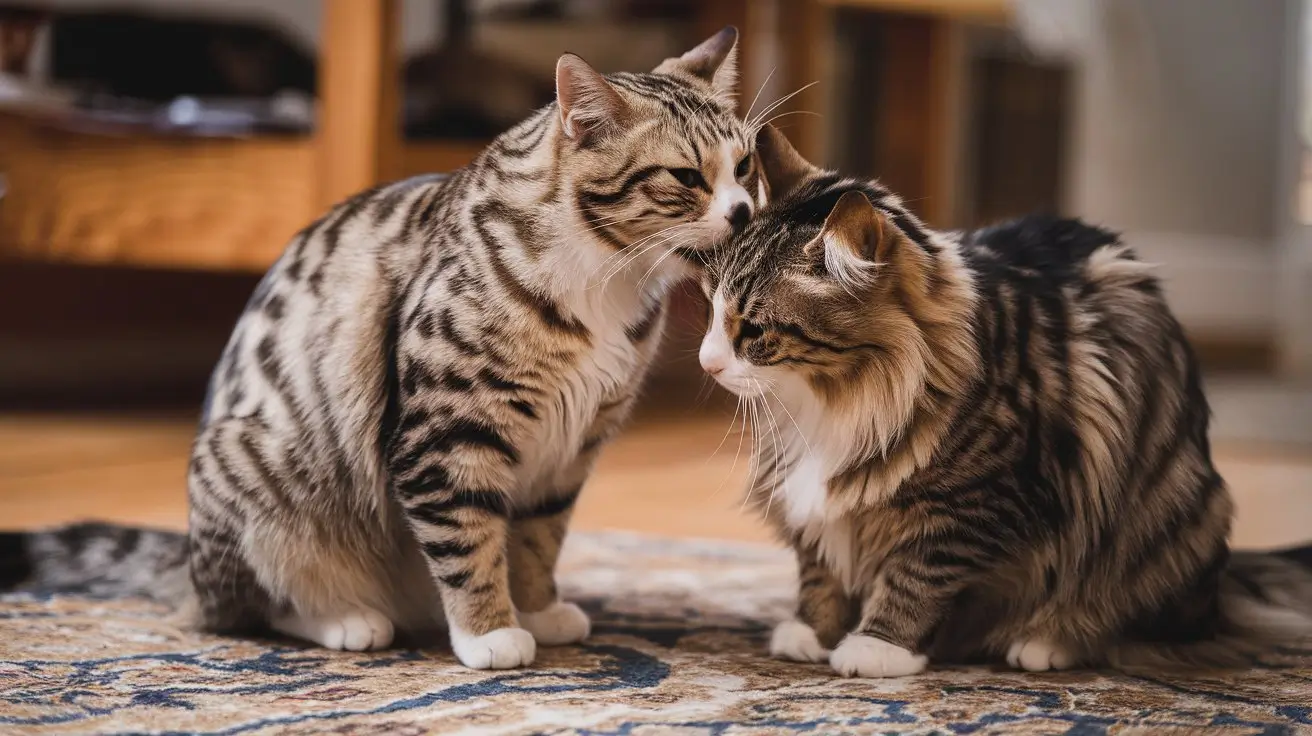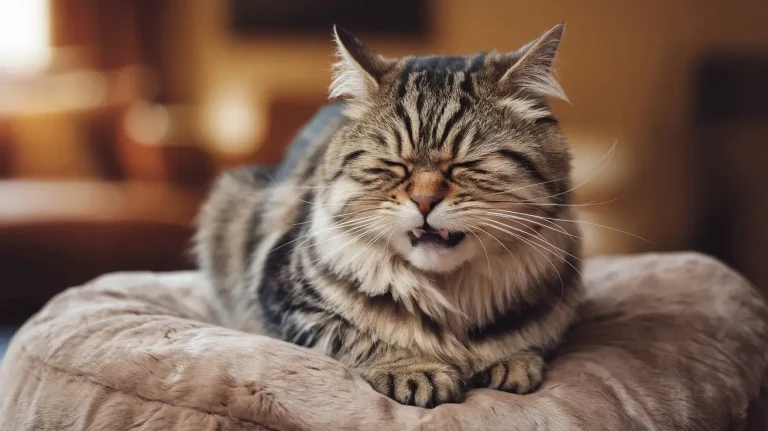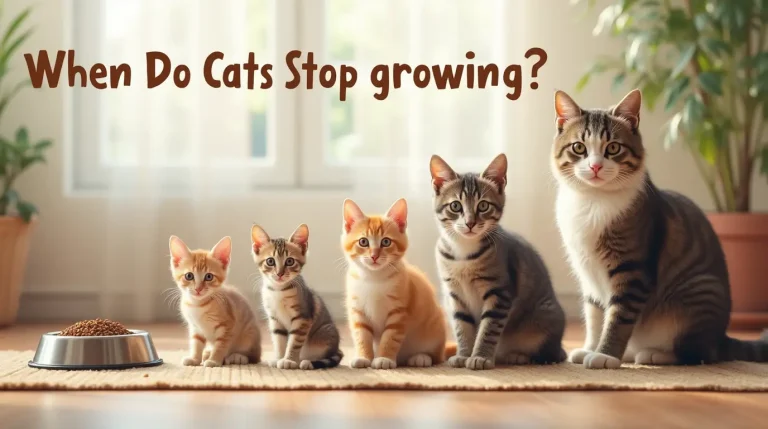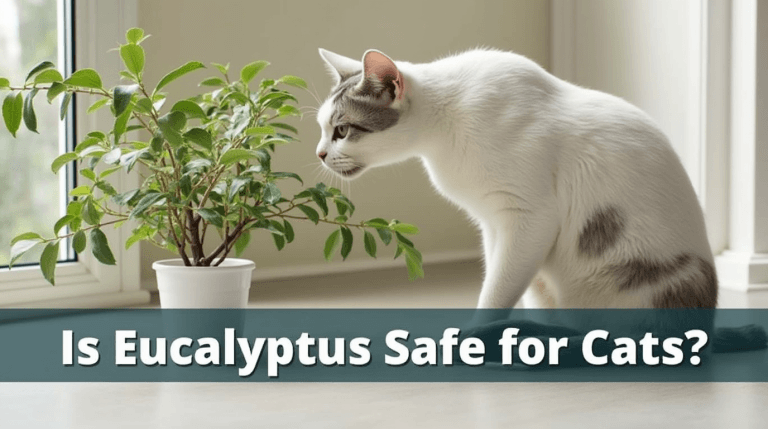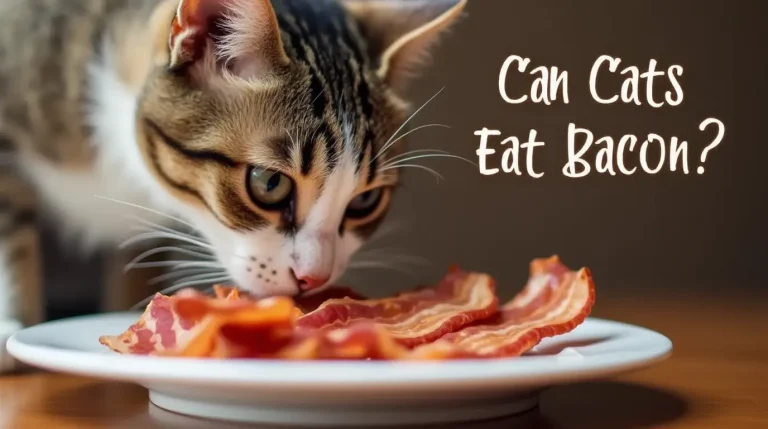If you’ve ever watched two cats gently licking and grooming each other, you may have wondered why do cats groom each other? This fascinating behavior, known as allogrooming, is more than just a cute moment between feline friends. Grooming plays a crucial role in cat bonding behavior, hygiene, and even establishing social hierarchy.
Cats groom each other to show affection, maintain cleanliness, and reinforce social relationships within their group. Whether it’s a mother cat cleaning her kittens or two feline companions engaging in mutual grooming, this behavior has deep-rooted instincts. However, grooming isn’t always about love sometimes, it can be a subtle sign of dominance or territorial behavior.
In this article, we’ll explore the different reasons why cats groom each other, how it benefits their well-being, and when it might indicate a deeper social dynamic. Understanding this behavior can help you strengthen your bond with your feline friend and ensure their social and emotional health.
Table of Contents
The Meaning Behind Cat Grooming: Love, Care, and Social Bonding
Feline Allogrooming: What It Is and Why It Matters
Allogrooming, or mutual grooming, is a common social behavior observed in cats. It involves one cat licking and cleaning another, usually focusing on areas that are hard to reach, such as the head, neck, and ears. While allogrooming may seem like a simple act of hygiene, it actually plays a much deeper role in cat bonding behavior.
In the wild, feline species engage in allogrooming as a way to reinforce social bonds within their colony. Domestic cats have inherited this instinct, using grooming not only to help each other stay clean but also to express trust and affection. If your cat licks another cat in your household, it’s a sign that they consider them part of their social group or “family”.
How Cats Use Grooming to Show Affection and Strengthen Relationships
Grooming is one of the primary ways cats express love and companionship. When two cats engage in mutual grooming, it’s a way for them to comfort each other and reduce stress. Cats that share a strong bond often groom each other regularly, reinforcing their emotional connection.
This behavior is similar to how humans use physical touch—such as hugs or handshakes—to strengthen relationships. Grooming releases endorphins, helping cats feel relaxed and secure. If you notice two cats grooming each other and then snuggling or sleeping together, it’s a clear sign of trust and a deep social bond.
Mother Cat and Kitten Grooming: The First Form of Feline Affection
Grooming starts at birth. A mother cat (queen) licks her kittens immediately after birth to clean them, stimulate their breathing, and encourage healthy circulation. This first interaction between mother and kitten is crucial, not just for survival but also for developing a strong bond.
As the kittens grow, their mother continues to groom them, teaching them proper grooming habits and social behaviors. Kittens also mimic their mother’s grooming behavior, which helps them learn how to care for themselves and others. This early allogrooming experience shapes their social interactions throughout their lives.
If you have multiple cats, you might notice that older, more dominant cats groom younger ones, much like a mother cat does. This is a way of providing comfort and guidance, just as a mother does with her kittens.
The Role of Cat Pheromones in Reinforcing Bonds
Cats rely heavily on scent communication, and their bodies produce pheromones—chemical signals that convey information to other cats. When a cat grooms another, it transfers its scent, reinforcing a sense of familiarity and group identity.
These pheromones help cats recognize each other as part of the same social group. In multi-cat households, mutual grooming can prevent conflicts by establishing a shared scent, making all members feel like they belong.
Additionally, some cats groom their owners as a way of marking them with their scent. If your cat licks you, they might be treating you as part of their trusted family unit!
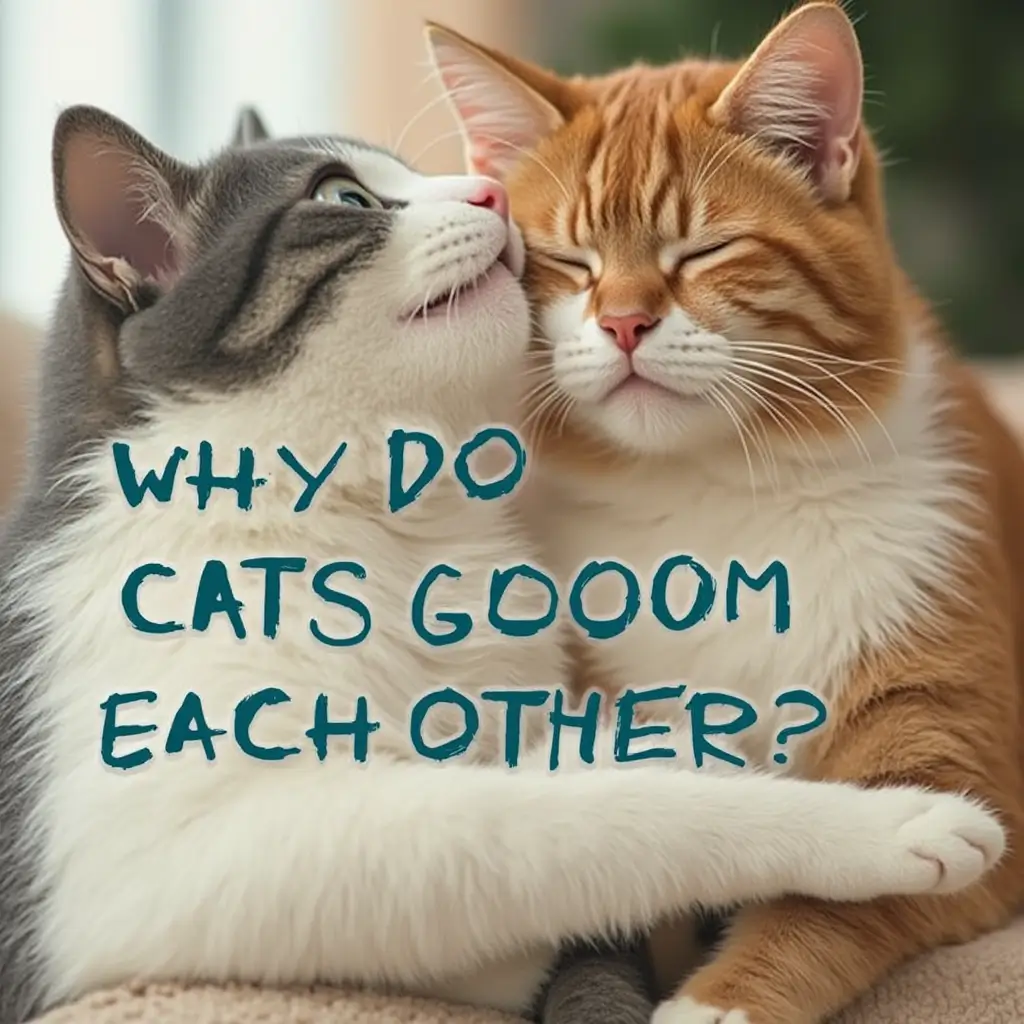
Grooming as a Sign of Care and Hygiene in Cats
Cats are naturally clean animals, and grooming plays a vital role in their daily routine. While cats often groom themselves, they also engage in social grooming (allogrooming) to help maintain cleanliness, especially in areas that are difficult to reach. Beyond just hygiene, this behavior has important benefits, including stress relief and social bonding.
How Social Grooming in Cats Helps Maintain Hygiene
Grooming is essential for a cat’s overall health and well-being. When cats groom each other, they help clean areas that may be hard to reach, such as the ears, head, and neck. This cooperative effort ensures that all members of a feline group remain clean and healthy.
Social grooming serves several hygiene-related purposes:
- Removing debris and dirt – Cats can pick up dirt, dust, and food particles on their fur. Grooming helps keep their coat clean.
- Spreading natural oils – A cat’s skin produces natural oils that help maintain a healthy coat. Licking spreads these oils evenly, giving their fur a soft, glossy appearance.
- Preventing matting and tangles – Long-haired cats, in particular, are prone to fur tangling. Grooming helps remove knots and tangles, preventing discomfort.
When two cats groom each other, they ensure that even the hardest-to-reach areas remain clean, reinforcing a shared responsibility for hygiene within their social group.
The Importance of Removing Dirt, Parasites, and Loose Fur
In addition to keeping their fur clean, grooming helps remove loose fur and dead skin cells, preventing excessive shedding. Cats naturally shed their fur, and if it’s not properly groomed, it can lead to hairballs a common issue in felines. When cats groom each other, they help reduce the amount of loose hair that could be swallowed and later coughed up as hairballs.
Grooming also plays a key role in parasite control. Cats can help each other by removing fleas, ticks, and other small pests from their fur. Although grooming alone isn’t enough to completely eliminate parasites, it does help reduce the number of unwanted intruders in their coat. If a cat constantly grooms a specific area on another cat, it may indicate that they have detected an itchy spot, wound, or even a parasite infestation.
In multi-cat households, regular grooming sessions between cats can be a sign of a healthy social dynamic where they look after each other’s hygiene and well-being. However, excessive grooming—especially if it results in bald patches—could be a sign of stress, allergies, or a medical issue that may require veterinary attention.
How Cat Grooming Rituals Can Help Relieve Stress and Promote Relaxation
Grooming is not just about physical cleanliness—it’s also a form of self-soothing and stress relief. The repetitive motion of licking helps cats relax, much like how some humans find comfort in habits such as brushing their hair or fidgeting.
When cats groom each other, it serves as a calming mechanism, helping to:
- Reduce anxiety and tension – Cats often groom each other after playtime or a minor conflict as a way to reconcile and restore peace.
- Create a sense of security – Grooming reassures cats that they belong to a safe and loving group. It’s particularly common in multi-cat households where bonded pairs or littermates engage in frequent allogrooming.
- Lower heart rate and stress levels – Studies suggest that grooming releases endorphins, which promote feelings of relaxation and contentment. If you’ve ever seen a cat get sleepy after a grooming session, it’s because this behavior has a naturally calming effect.
Interestingly, some cats may even try to groom their owners as a sign of affection and stress relief. If your cat licks your hand, hair, or face, they might be treating you as part of their family and showing their love and trust.
Grooming and Dominance: Understanding the Feline Social Hierarchy
While cat grooming is often associated with affection and bonding, it can also play a role in establishing dominance and reinforcing social hierarchy within a group. Cats have complex social structures, and grooming isn’t always just a loving gesture it can sometimes be a way for a dominant cat to assert control over a more submissive one. Understanding the connection between grooming and territorial behavior, dominance, and stress can help cat owners interpret their feline companions’ interactions more effectively.
How Territorial Behavior in Cats Affects Grooming Habits
Cats are naturally territorial animals, and their social structure often revolves around establishing and maintaining clear boundaries. In a multi-cat household or a group of feral cats, dominant cats tend to control resources such as food, resting spots, and even grooming interactions.
- Dominant cats may initiate grooming to reinforce their leadership over the other cats in their territory.
- Cats who are closely bonded and share a territory will often engage in mutual grooming to establish a shared group scent—a way to mark their social unit and distinguish themselves from outsiders.
- Cats that are less dominant may accept grooming from a more dominant cat as a sign of social submission rather than an equal bonding act.
Territorial behavior can sometimes cause conflicts in grooming habits. For example, if a new cat is introduced into a home, the resident cat may use grooming as a way to assert its dominance or claim ownership over the newcomer. Conversely, some cats may refuse to groom a new companion if they perceive them as an outsider.
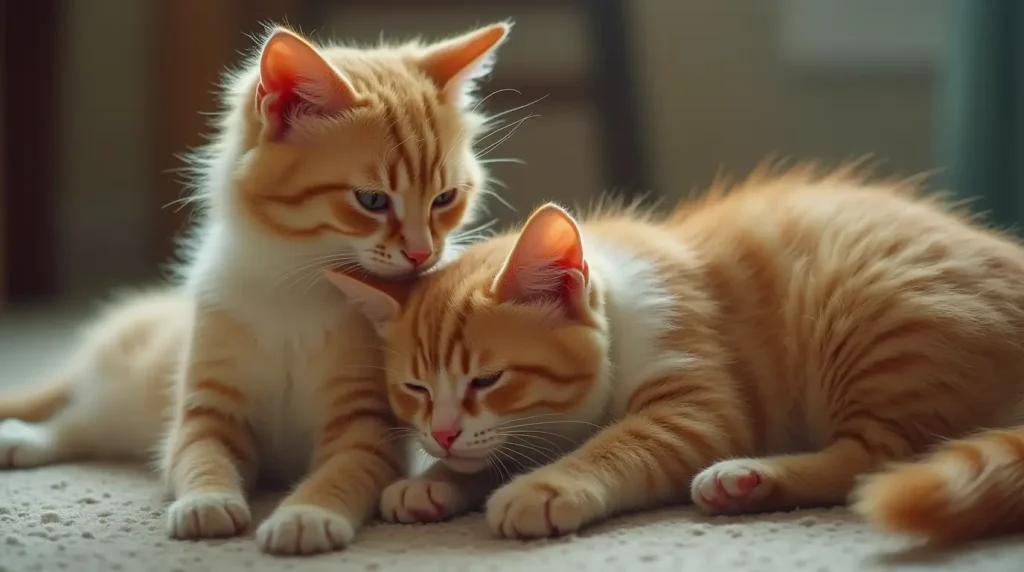
Grooming as a Display of Dominance Behavior in Cats
In feline social groups, dominant cats often groom their subordinates not only as a bonding act but also as a way of displaying control. This behavior can be compared to how some animals engage in dominance rituals to establish order within a group.
Some key signs that grooming is being used as a dominance display include:
- One cat always being the groomer while the other remains passive. A dominant cat may frequently lick another cat’s head or neck, reinforcing its position in the hierarchy.
- The grooming session appearing one-sided. If one cat consistently initiates grooming but doesn’t receive it in return, this could indicate a social ranking difference rather than mutual affection.
- Grooming that transitions into aggressive behavior. Sometimes, dominant cats will start grooming another cat but then suddenly bite or swat at them, signaling that the session is more about control than care.
While dominance-related grooming is usually harmless, excessive forceful grooming or aggressive biting may indicate a power struggle between cats. In such cases, it’s important to monitor their interactions to prevent escalation into fights.
Signs That Grooming Might Indicate Stress or Submission
Not all grooming interactions are positive. In some situations, a cat may accept grooming as a sign of submission, especially in a household with an assertive or more dominant feline.
Here are some signs that grooming may be linked to stress or submission:
- One cat lowers its head or body while being groomed, showing submissive body language.
- A cat tolerates excessive grooming without reciprocating, possibly out of anxiety or avoidance.
- After being groomed, the passive cat walks away quickly or avoids further interaction.
- Ears flattened, tail tucked, or body tense—these can be signs that a cat is not comfortable with the interaction.
Stress-related grooming can also happen when a cat is feeling anxious about changes in its environment, such as:
- A new pet or person entering the home
- A recent move or change in living arrangements
- Competition for food, litter boxes, or resting spots
In such cases, grooming might not be about affection or dominance but rather a way for cats to cope with stress and establish familiarity in uncertain situations.
When Excessive Grooming Could Be a Sign of Health Issues
While social grooming is normal, excessive grooming—whether self-directed or directed at another cat—can be a warning sign of an underlying problem.
Possible health-related causes of excessive grooming include:
- Skin irritation or allergies – If one cat persistently grooms another in the same area, it could indicate an underlying skin condition, flea infestation, or allergy-related irritation.
- Pain or injury – Cats may lick an area excessively if it is injured or causing discomfort. If one cat is repeatedly grooming another’s joints, belly, or back, it might be worth checking for signs of pain.
- Obsessive grooming due to anxiety – In some cases, grooming can turn into overgrooming, where a cat licks itself or another cat excessively, leading to bald spots, skin sores, or irritation. This can be a response to stress, anxiety, or compulsive behavior.
- Medical issues such as hyperthyroidism or infections – Some medical conditions can cause cats to groom excessively due to discomfort or changes in hormonal balance.
If a cat is engaging in compulsive grooming—whether on themselves or another cat—it’s best to consult a veterinarian to rule out any medical concerns.
Warp up
In summary, grooming is an essential part of feline behavior, and the act of cats licking each other goes far beyond just maintaining cleanliness. Cats groom each other as a form of communication—it’s a way to express affection, bond socially, and even establish dominance. Whether it’s a sign of care and hygiene or a means of reinforcing social hierarchy, grooming plays a pivotal role in the relationships between cats. Through mutual grooming, cats demonstrate trust, companionship, and a shared sense of belonging.
However, it’s important for cat owners to understand that grooming isn’t always purely affectionate. Excessive or aggressive grooming could indicate stress, anxiety, or health issues. If a cat is grooming too much or in a forceful manner, it may be a sign of discomfort, skin problems, or even emotional distress. In such cases, seeking veterinary advice is crucial to ensure your cat’s health and well-being.
As a cat owner, it’s essential to observe your pet’s social interactions and grooming habits. By paying attention to how your cats interact, you can gain a better understanding of their social dynamics and emotional states. Whether you’re witnessing a peaceful grooming session or noticing any signs of stress or tension, this behavior offers valuable insights into your cat’s social life and overall health. So, watch closely, and keep your cat’s grooming habits in check—it could be the key to ensuring their happiness and comfort.

